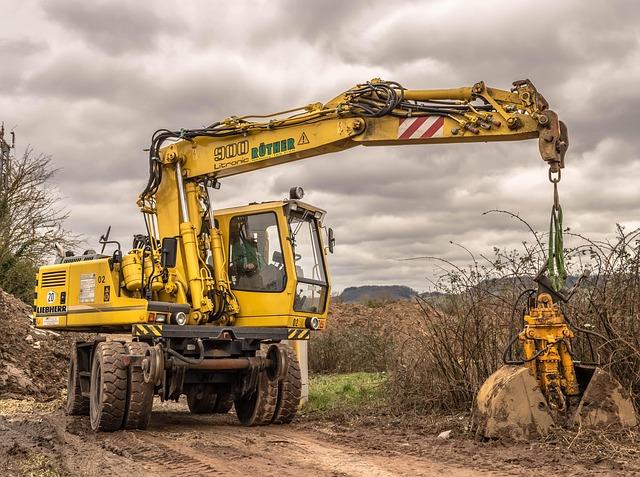Discovery of Historical Cranium Gives Glimpse into Early Human Evolution
The current discovery of a 1.4 million-year-old cranium in Spain has sparked pleasure amongst archaeologists and anthropologists, shedding new gentle on the bodily traits of early people in Western Europe. Dubbed the “earliest human face” of the area, this well-preserved specimen gives invaluable insights into the morphological traits that outlined our ancestors. The cranium, attributed to the species Homo antecessor, seems to own a outstanding mix of recent and primitive options, together with:
Protruding forehead ridges which might be extra pronounced than these of latest people.Total facial construction indicating a transition from extra ape-like ancestors to trendy people.Measurement and form of the cranial cavity, suggesting superior cognitive capabilities.
Researchers consider that this discover not solely enriches our understanding of human evolution but additionally raises questions in regards to the migration patterns of early hominins throughout Europe. Comparative analyses are underway,specializing in different recognized historic human fossils from the area to construct a clearer image of cultural and organic evolution. Preliminary research from the excavation website have proven:
FeatureDetailsLocationnear the Atapuerca Mountains, SpainAge1.4 million yearsSpeciesHomo antecessorSignificanceEarliest human face in Western Europe

Significance of the Discover within the Context of Western European Prehistory
The invention of the 1.4 million-year-old cranium in Spain represents a monumental leap in our understanding of early hominins in Western Europe. This discover not solely pushes again the timeline of human presence within the area but additionally gives vital insights into the bodily traits of early human ancestors. The cranium is believed to belong to a species that shares traits with each Homo erectus and Homo heidelbergensis, bridging an important hole within the evolutionary tree. by analyzing the morphological options of the cranium, researchers can glean information in regards to the variations that facilitated human survival and migration throughout the continent.
Moreover, the implications of this discovery lengthen past mere anatomical particulars, heralding a broader understanding of the social and cultural dynamics of early human life. It means that Western Europe was a significant locale for human evolution, probably serving as a refuge or assembly level for migrating populations. Key elements of this analysis embrace:
Environmental Diversifications: Insights into how these early people tailored to their environment.Migration Patterns: Understanding routes taken by early hominins as they unfold all through Europe.Social Constructions: The cranium might present clues about group dynamics and social group in prehistoric communities.FeatureSignificanceAge of the Skull1.4 million years, indicating early human presence in Western Europe.Species CharacteristicsBridges evolutionary traits between vital hominin species.Geographical InsightsSuggests Western Europe as a key space for human evolution.

Analyzing the Anatomical Options of the 1.4 Million-Yr-Previous Cranium
The newly found cranium, estimated to be round 1.4 million years previous, has offered scientists with invaluable insights into the anatomical evolution of early people in Western Europe. Its options point out a major mix of archaic and superior traits that spotlight the transitional part our ancestors skilled throughout this era. Researchers have recognized key traits,together with:
Strong Cranial Construction: The cranium reveals a outstanding forehead ridge,suggesting a lineage intently associated to earlier hominins.Facial Proportions: The facial construction aligns extra intently with trendy people, indicating potential for superior social behaviors and variations.dental Morphology: The association and measurement of the tooth trace at a diverse weight loss plan, shedding gentle on the dietary challenges confronted by early human populations.
In evaluating this cranium to different vital fossil findings, researchers have constructed a clearer image of human evolution. A desk summarizing the notable options of various skulls emphasizes the range and complexity inside our ancestral lineage:
Cranium FindEstimated AgeKey Features1.1.4 million yearsRobust forehead ridge, superior facial featuresHomo Heidelbergensis600,000 – 200,000 yearsLarge braincase, decreased forehead ridgeNeanderthal Skull400,000 – 40,000 yearsProminent forehead ridge, giant nasal cavity

Implications for Understanding Early Human Migration Patterns
The current discovery of a 1.4 million-year-old cranium in spain has reworked our understanding of early human migration patterns in Western Europe. This outstanding discover gives essential insights into the anatomical traits and variations of our historic ancestors, shedding gentle on how they navigated varied environmental challenges. As researchers analyse the cranium’s morphological options, new questions come up in regards to the potential routes taken by early people as they unfold throughout the continent. Not solely does this discovery illuminate the evolutionary lineage of early human populations, nevertheless it additionally means that Western Europe was inhabited far sooner than beforehand thought.
Moreover, the implications of this discovery lengthen past Spain, because it encourages scientists to rethink the interconnectedness of varied hominin species all through Europe and past. The cranium’s distinctive traits permit for a deeper understanding of the next elements:
Cultural exchanges amongst early human teams.Climatic variations and migratory actions in response to environmental adjustments.Social buildings which will have existed amongst early human communities.
Such findings drive the necessity for additional archaeological exploration and comparative research throughout Europe to color a extra thorough image of our species’ historic journeys.
Skilled Opinions on the Way forward for Paleoanthropological Analysis in Spain
The invention of a 1.4 million-year-old cranium in Spain has sparked vigorous discussions amongst paleoanthropologists concerning the longer term trajectory of analysis within the area.Consultants emphasize that Spain’s pivotal place in Europe, mixed with developments in archaeological know-how, might unveil additional insights into early human evolution. Within the coming years, researchers anticipate elevated collaboration throughout varied scientific disciplines, integrating fields reminiscent of genetic evaluation, paleoecology, and geospatial know-how to boost understanding of early hominin habits and migration.
A number of key elements will form the panorama of paleoanthropological analysis in Spain:
Funding in Technological Innovation: As new strategies for excavating and analyzing historic stays emerge, the power to extract information from difficult environments will considerably develop.Interdisciplinary Analysis Initiatives: Collaboration with geneticists, climatologists, and anthropologists will broaden the interpretation of fossils and artifacts.Concentrate on Local weather Change Results: Understanding how local weather shifts influenced human migration patterns and survival methods will turn into more and more related.Analysis FocusExpected OutcomesFossil excavation Techniquesimproved restoration of historic artifactsGenetic ResearchInsights into lineage and diversityClimate Influence StudiesUnderstanding adaptation methods
this evolving panorama not solely displays Spain’s wealthy paleoanthropological heritage but additionally highlights its potential as a hub for groundbreaking discoveries which will redefine our understanding of human origins in Western Europe.

suggestions for Additional Excavations and Research in Key Archaeological Websites
The current discovery of a 1.4 million-year-old cranium in Spain has vital implications for our understanding of early human ancestry in Europe. Given the significance of this discover, it’s certainly crucial to prioritize additional excavations within the surrounding areas to unearth extra artifacts which will present context to this monumental discovery. Researchers ought to give attention to websites inside a 15-kilometer radius of the discover, as geological surveys counsel that comparable circumstances which facilitated the preservation of this cranium might result in extra comparable fossils. Potential avenues for exploration embrace:
Geological evaluation of sediment layers to know the environmental circumstances that prevailed throughout this period.Investigation of close by historic device websites to ascertain connections between early hominids and their instruments.Collaboration with multidisciplinary groups to combine insights from paleontology and anthropology.
Moreover,the institution of a complete analysis framework centered on this pivotal geographical area might yield essential outcomes. Making a database of findings and conducting comparative analyses with different main archaeological websites in Europe can also improve our understanding of human evolution. very important elements to incorporate in future research are:
FactorImportanceclimate Change EffectsImpact on migration and survivalCultural ArtifactsInsight into social structuresGenetic StudiesUnderstanding lineage and variety
In Abstract
the invention of a 1.4 million-year-old cranium in Spain marks a major milestone within the understanding of human evolution in Western Europe. this outstanding discover sheds gentle on the anatomical traits of our historic ancestors and gives invaluable insights into their migration patterns and adaptation methods. As researchers proceed to research this extraordinary fossil, it guarantees to deepen our data of early human life and the evolutionary journey that has formed trendy homo sapiens. The implications of such an historic cranium lengthen past tutorial curiosity; they problem earlier notions of human development in Europe and spotlight the area’s significance within the broader narrative of human historical past. As additional research unfold, we are able to anticipate this discovery to invigorate discussions and analysis in paleoanthropology, paving the way in which for brand new revelations about our shared ancestry.
Source link : https://europ.info/2025/03/13/spain/1-4-million-year-old-skull-found-in-spain-is-earliest-human-face-of-western-europe-msn/
Creator : Ethan Riley
Publish date : 2025-03-13 12:46:00
Copyright for syndicated content material belongs to the linked Source.


